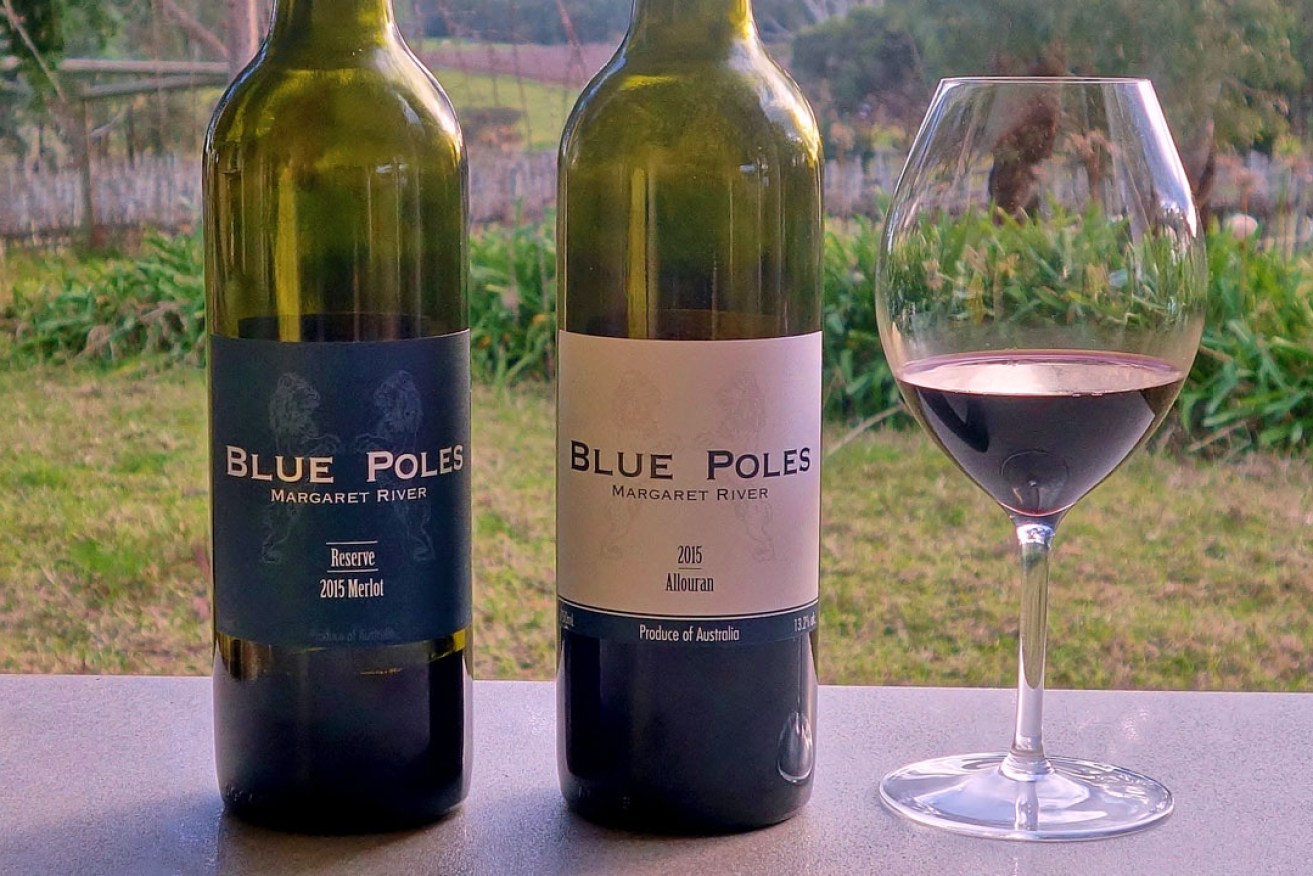Merlot: much more than mellow
Philip White ponders a new wave of top-line Merlots and reviews two of his current faves.


Photo: Philip White
Merlot. Poor thing. Abused for decades in Australia, often by famous winemakers who grew awkward clones and over-oaked it. And confused by Americans, who thought it mean mellow, mainly because the words to them sounded the same.
There’s hope, however. Various small producers faithful to the great Bordeaux wines of Pomerol are kicking serious arse with it, finally, in Australia. Blue Poles (Margaret River), Ruckus Estate Mérite (Wrattonbully), Broderick’s Basket Range Wines (Adelaide Hills) and Hickinbotham Clarendon Vineyard (McLaren Vale) are my current faves.
Regardless of the grape’s thin skin and resulting susceptibility to moulds like mildew and botrytis, France has 115,000 hectares of Merlot; internationally there’s about 266,000 hectares of it, making it the world’s third biggest wine grape variety.
The sands, ferruginous clays and limestone of the Bordeaux “Right Bank” (referring to the country north of the Dordogne and Gironde Rivers), with its Pomerol and Saint-Émilion appellations, makes the Merlot most loved, or at least most coveted, by many. There, it’s usually blended with a little of the fragrant Cabernet franc. I notice you can order a bottle of the 2017 Chateau Petrus, which won’t arrive until 2020, for $3995, or collect the 2010 model now for $9975.
The two (count ’em, two, okay?) hectares of sandy gravel on the slab limestone of the cult icon, Chateau Le Pin, which is all Merlot, is scarcely available in Australia. It’ll be closer to $3000 than $2000 a pop if you can find a recent vintage.
Blue Poles Vineyard Margaret River Reserve Merlot 2015 ($40; 13.3% alcohol; screw cap) is equal to Le Pin in its size: two whole hectares of Merlot, growing in a profile its Australian geologist owners felt was as close to the Right Bank’s best as their seaside appellation affords.
As geologists do, they drilled holes looking for it.
“It had everything [we] desired … iron rich gravels overlying clay, slopes to the south and west, a cooler climate than the more coastal and northern vineyards of the region, giving a longer ripening period … it’s a beautiful location,” Mark Gifford writes.
In this, its most awkward youth, it oozes moody semi-dried fig, prune and date aromas as much as the usual desirable black-to-blue berries. Its oak is more like the trencher board these fruits are presented on than your actual container: it’s not so intrusive, but pleasant, seasoning and supportive. Below those fruits lie aromas insinuating mossy, ferny earth and fresh Plumcake pipe tobacco, which is nothing like cigarettes. Such perfumes of rich vegetal decay usually indicate deep green tannins to follow. Strong tannins, but ripe and not at all angular. Certainly not mellow at this stage; more like surly and glowering.
I dare to suggest I get a whiff of port salut cheese as well, without its waxy rind.
As the wine gulps oxygen – this is the second day open – it grows a creamy, musk sugar top layer, which seems to seal it as much as open it. It becomes more monolithic.
But within that stubborn, squat shape, its texture is all velvet and dry; its flavours jostling to settle like a basket of puppies. That structure promises a wine which will bloom and burst out over the years: what? Twenty of them, under that screwie? Comfortably, I reckon.
It’s yet another reason to stay alive, not to see whether or not my prophecy is true blue, but merely to cark with that mad Merlot smile of the deepest satisfaction. This is a benchmark Merlot for Australia. And price-wise, it’s a serious cannonade across the bows of Bordeaux, whichever bank you aim at.
Blue Poles Margaret River Allouran 2015 ($40; 13.2% alcohol; screw cap) is Merlot with about 30 per cent Cabernet franc, from the adjacent 1ha block.
The Franc gives that deep vegetal Merlot even more confectionary dressing: while still very complex and deep, it has alluring and capricious whiffs of crystallised violets and marshmallow sugar. These are reluctant, like the best bits of the baby Merlot above, but they make the wine seem a little more casual, which is misleading.
While the palate’s more lissom and spritely – this puppy’s at least half whippet – and the tannins take longer to park, all this merely reminds me of the sorts of Coonawarra one could sometimes find when they picked before the jam or the frost hit: think Merrill’s old Chateau Reynella Coonawarra blends after the Bordeaux style, without nearly so much green tea tannin and tomato leaf.
Perhaps not looking at such longevity, this is the modern Premières Côtes de Bordeaux, dancing, giggling like Harlequin in circles round the more reserved Merlot. More drinking, less thinking, especially with that port salut.
Which is not to say it’s rosé, or even clairette. But to me it fits the old claret template. Ten years? Probably. It’ll be as cute and dribbly as those puppies in two.
If Jackson Pollock had a case of each of these wines he woulda stayed home painting poles instead of perishing with Edith when he rolled his Olds while tanked on rye.




